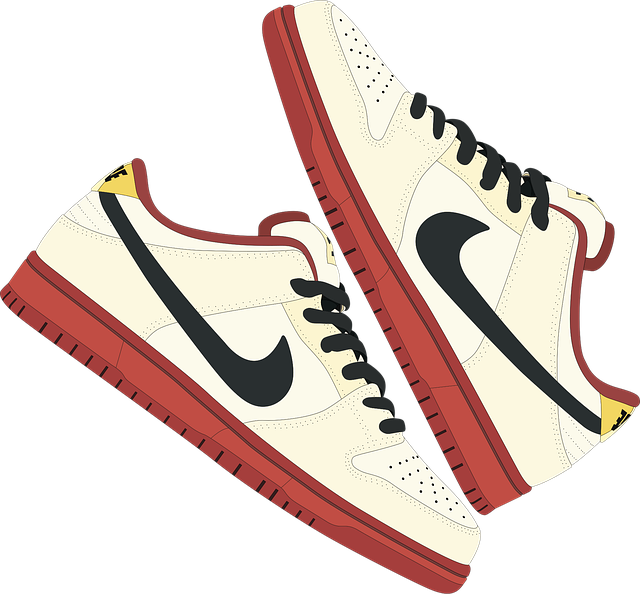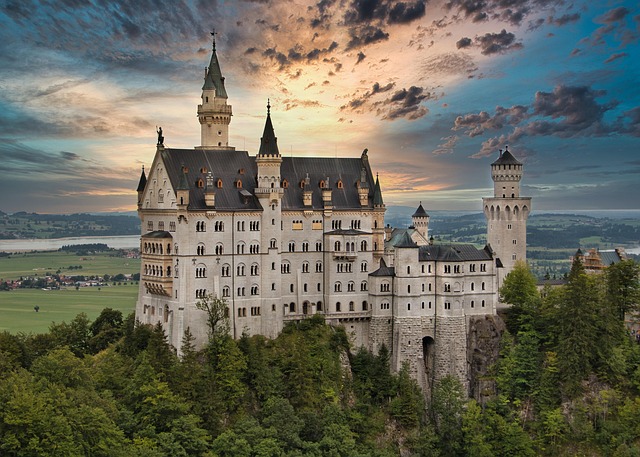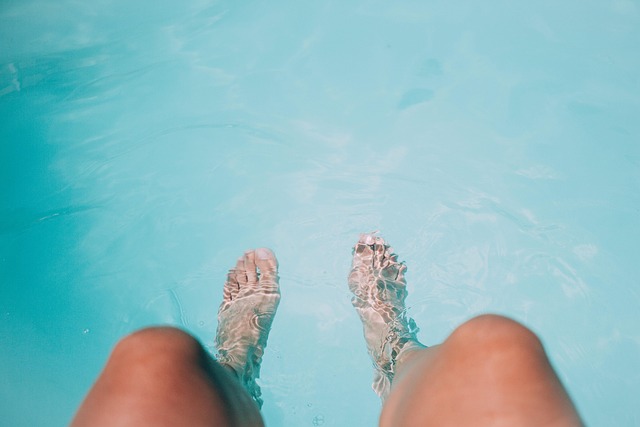Category: Botox for Fine Lines and Wrinkles
Botox for Fine Lines and Wrinkles: Unlocking Youthful Skin
Introduction
Welcome to an in-depth exploration of the world of Botox, specifically focusing on its application in addressing fine lines and wrinkles. In today’s beauty and wellness landscape, non-invasive cosmetic procedures are gaining immense popularity, with Botox emerging as a leading treatment option for those seeking to combat signs of aging. This article aims to provide a comprehensive guide, shedding light on various aspects of Botox for fine lines and wrinkles, from its scientific basis to global trends, economic implications, and future prospects. By the end, readers will have a thorough understanding of this transformative procedure and its role in the beauty industry.
Understanding Botox for Fine Lines and Wrinkles
Definition and Mechanism
Botox, short for Botulinum Toxin, is a highly specialized protein produced by the bacterium Clostridium botulinum. When injected into specific muscles, Botox blocks nerve signals that stimulate muscle contraction. This action leads to temporary relaxation of the treated muscles, which has significant effects on skin appearance. In the context of fine lines and wrinkles, Botox is primarily used to soften or reduce the depth of expression lines around the eyes (crow’s feet), forehead, and mouth.
Historical Perspective
The use of Botox for cosmetic purposes traces back to the 1970s when it was initially approved by the U.S. Food and Drug Administration (FDA) for medical conditions such as overactive bladder and chronic migraines. In the late 1980s, researchers noticed its off-label use in treating facial wrinkles, marking the beginning of its popularity in aesthetic medicine. Over time, clinical trials and real-world applications have refined Botox’s usage, leading to improved techniques and better patient outcomes.
Significance and Applications
Botox for fine lines and wrinkles represents a significant advancement in non-surgical skincare. Unlike traditional surgical facelifts or more invasive procedures, Botox offers a minimally invasive approach with quicker recovery times. Its versatility allows estheticians and dermatologists to tailor treatments to individual needs, making it suitable for a wide range of patients. While commonly associated with anti-aging, Botox can also be used to treat medical conditions like hemifacial spasm and excessive sweating (hyperhidrosis).
Global Impact and Trends
International Market Analysis
The global market for cosmetic Botox has experienced substantial growth over the past decade, reflecting its increasing popularity worldwide. According to a report by ResearchAndMarkets.com, the global aesthetic Botox market size was valued at USD 4.8 billion in 2021 and is projected to grow at a compound annual growth rate (CAGR) of 6.5% from 2022 to 2030. This growth is driven by rising consumer awareness, changing beauty standards, and the pandemic’s indirect impact, as people prioritize self-care and appearance.
Regional Disparities and Trends
The adoption of Botox varies across different regions, influenced by cultural norms, economic factors, and regulatory environments:
| Region | Market Dynamics | Key Trends |
|---|---|---|
| North America | High penetration rate with early acceptance; robust medical aesthetics industry. | Increasing demand for natural-looking results; focus on niche treatments like botulinum toxin for specific concerns. |
| Europe | Diverse market with stringent regulations; strong emphasis on clinical research and patient safety. | Growing preference for long-acting fillers and combined treatments; rise of at-home Botox kits. |
| Asia-Pacific | Rapidly expanding market, particularly in China and Japan; high disposable income driving cosmetic procedures. | Trend towards non-surgical aesthetic enhancements; popularity of K-beauty trends influencing regional preferences. |
| Latin America | Rising market share with increasing consumer spending on personal care. | Growing interest in Botox for medical aesthetics; influence of celebrity culture promoting early anti-aging treatments. |
Economic Considerations
Market Dynamics and Investment
The economic landscape surrounding Botox for fine lines and wrinkles is dynamic, reflecting its position as a lucrative segment within the global beauty industry. Key market drivers include:
- High Demand: As the population ages and consumer preferences shift towards anti-aging treatments, the demand for Botox continues to rise.
- Competitive Landscape: Numerous pharmaceutical companies and aesthetic clinics offer Botox products and services, leading to price competition and innovative product development.
- Regional Disparities: Different regions exhibit varying levels of market penetration, presenting opportunities for targeted marketing and investment strategies.
Investment Patterns
Investors in the Botox market have shown a keen interest in:
- Pharmaceutical Companies: Major pharmaceutical giants like Allergan (owner of Botox brand) and Medicis Pharmaceutical Corporation are key players, focusing on product innovation and expanding their aesthetic portfolios.
- Aesthetic Clinics and Practices: Independent clinics and medical spas invest in Botox to enhance their service offerings, attracting a diverse customer base.
- Startup Innovations: Newer companies are exploring niche applications, improved delivery methods, and natural alternatives to Botox, creating potential for disruption in the market.
Technological Advancements
Innovations in Botox Delivery
Technological advancements have significantly enhanced the field of Botox application:
- Fine Needle Injection (FNI): Traditional method using fine needles for precise injections, ensuring minimal trauma and reduced downtime.
- Microneedling with Botox: Combining microneedling devices with Botox to improve product penetration and enhance treatment outcomes.
- Ultrasound-Guided Injections: Utilizing ultrasound technology to visualize muscles and nerves, allowing for more accurate Botox placement.
- Minimally Invasive Devices: Development of specialized needles and delivery systems for easier and faster injections, improving patient comfort.
Long-Acting Formulations
One of the most significant advancements is the introduction of long-acting Botox formulations. These products offer extended effects, typically lasting 6-12 months or more, reducing the frequency of treatments required. Examples include:
- Onbotox (Allergan): Approved by the FDA for treatment of moderate to severe glabellar line (frown lines) and offers a duration of up to 6 months.
- Avera (Medicis): Indicated for improving moderate to severe vertical wrinkles between the eyebrows, with effects lasting up to 3 months.
Digital Tools and Patient Education
The digital revolution has also transformed how patients interact with aesthetic providers:
- Virtual Consultations: Telehealth platforms enable initial patient assessments and treatment planning, increasing accessibility, especially in remote areas.
- Augmented Reality (AR) Apps: AR applications allow patients to visualize potential treatment outcomes, enhancing decision-making and provider communication.
- Patient Education Platforms: Digital tools provide comprehensive information about Botox procedures, risks, and recovery, empowering patients to make informed choices.
Clinical Efficacy and Safety
Clinical Studies and Results
Extensive clinical research has demonstrated the efficacy of Botox in treating fine lines and wrinkles:
- A 2017 study published in The Journal of Aesthetic Dermatology found that Botox injections significantly improved the appearance of crow’s feet and frown lines, with effects lasting up to 4 months.
- Research by the American Academy of Dermatology (AAD) highlights the safety and effectiveness of Botox for treating glabellar line wrinkles, with minimal adverse events reported.
Safety Considerations
Botox is generally considered safe when administered by qualified healthcare professionals following proper indications and techniques. Common side effects include temporary bruising, swelling, headaches, and muscle weakness at the injection site. Serious but rare complications may include asymmetry, eye problems (dry eye, double vision), and allergic reactions. Patient selection, provider expertise, and adherence to best practices are crucial for minimizing risks.
Regulatory Environment
Global Regulations
The regulatory landscape for Botox varies globally, influenced by local healthcare systems and consumer protection agencies:
- U.S.: The FDA regulates Botox for specific medical and cosmetic indications. Clinical trials and strict labeling requirements ensure product safety and efficacy.
- Europe: Each country has its own regulatory authority (e.g., EMA in the EU) that approves Botox products based on scientific data. Post-market surveillance is essential to monitor long-term effects.
- Asia: Regulations differ across countries, with some having stricter controls and others allowing broader access. China, for instance, has a robust regulatory framework, while Japan offers more flexible guidelines.
Approval Processes and Challenges
Obtaining regulatory approval for Botox products involves rigorous clinical trials and data submission:
- Indication Specificity: Regulators require robust evidence demonstrating the product’s safety and efficacy for specific medical or cosmetic indications.
- Long-Term Studies: Due to the temporary nature of Botox, extended-duration products may require longer-term clinical trials to assess long-term safety and immunogenicity.
- Post-Marketing Surveillance: Even after approval, manufacturers must actively monitor product performance and adverse events through surveillance programs.
Conclusion
Botox for fine lines and wrinkles represents a dynamic and growing segment within the global aesthetic industry, driven by technological advancements, changing consumer preferences, and stringent regulatory oversight. As the market continues to evolve, ongoing research, improved delivery methods, and personalized treatment approaches will shape its future, offering patients more effective and safer anti-aging solutions.
Botox for Crow’s Feet & Smile Lines: Natural Wrinkle Solution
Botox for Crow’s Feet and Smile Lines: A Comprehensive Guide
Botox for Crow’s Feet & Smile Lines: Youthful Skin Secrets Unveiled
Customized Botox: Target Crow’s Feet & Smile Lines Safely
Unraveling Fine Line Botox: Targeting Crow’s Feet & Smile Lines
Targeted Botox: Tackling Crow’s Feet & Smile Lines for Youthful Skin

Botox, derived from bacteria, is a popular non-surgical treatment for reducing fine lines and wrinkl…….
Botox for Crow’s Feet and Smile Lines: Revitalize Your Skin Naturally

Botox, a natural protein produced by bacteria, is a popular non-invasive treatment for reducing the…….
Unraveling Non-Surgical Botox: Targeting Crow’s Feet and Smile Lines

Botox, derived from Clostridium botulinum, is a non-surgical treatment for fine lines and wrinkles,…….
Customized Botox Treatments: Targeting Crow’s Feet & Smile Lines

Botox, derived from bacteria, offers a natural, minimally invasive solution for addressing signs of…….





